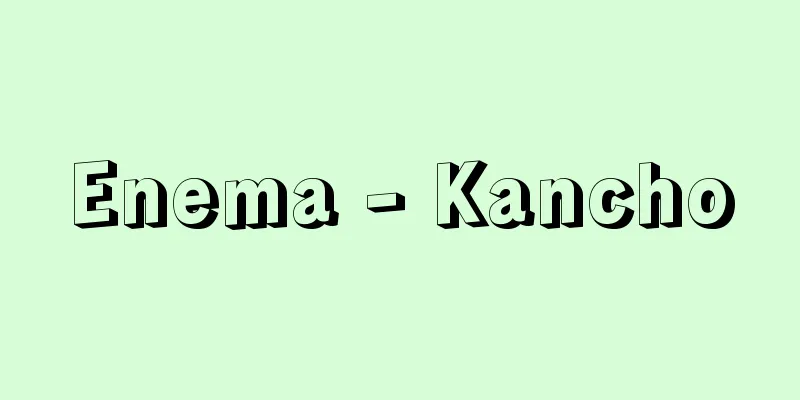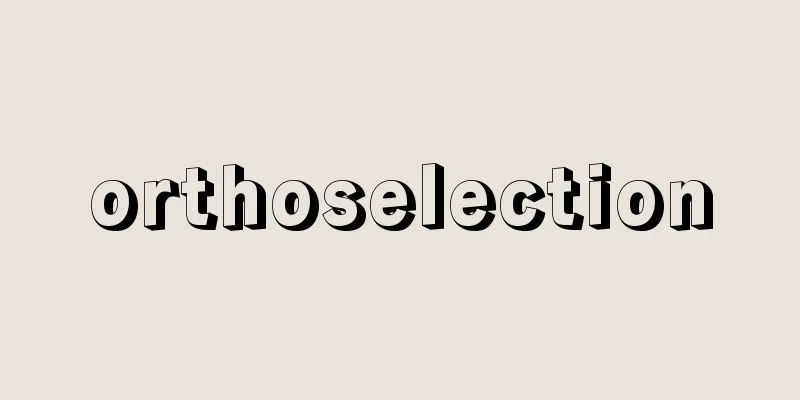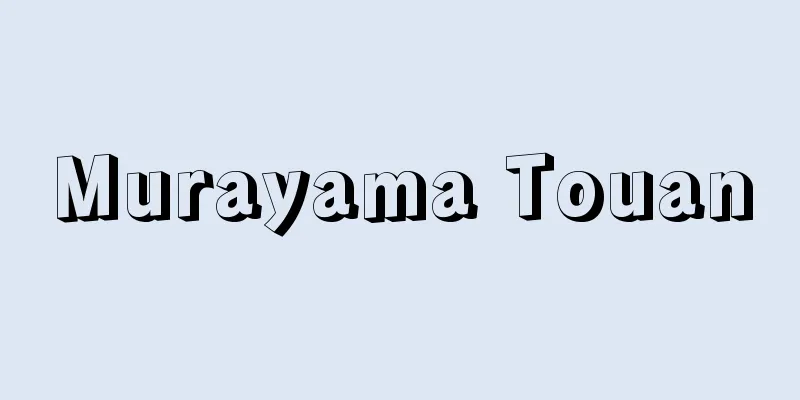Enema - Kancho

|
A method of injecting medicinal liquids into the rectum and colon through a tube inserted through the anus for medical purposes. It is said to have been practiced since ancient times in various parts of the world, but Japanese doctors began using the enema method in the late Edo period when Western medicine was introduced. Currently known types of enemas are laxative (defecation) enemas, carminative enemas, palliative enemas, arousal enemas, sedative enemas, barium enemas, nourishing enemas, and retention enemas. (1) Cathartic (defecatory) enemas are used to expel feces from constipation, to clear and examine intestinal contents in the case of food poisoning, and to cleanse the rectum during surgery or childbirth. There are two types of medicinal liquids injected: those that stimulate intestinal peristalsis to promote defecation, and those that directly soften feces, but the distinction is not strict and many have both effects. Glycerin is a typical example of the former, and soapy water and saline solution also have both effects. (2) Carminative enema: This promotes the expulsion of gas accumulated in the intestines and relieves abdominal bloating. (3) Palliative enema: A medicinal liquid is administered to inflamed and eroded intestinal mucosa to relieve the inflammation and erosion. (4) Stimulation enema: A patient who is in shock or collapse is stimulated by injecting a medicinal liquid. (5) Sedative enema: An anesthetic or sedative is injected to soothe and calm the nerves. It is used, for example, when taking an electrocardiogram for a child. (6) Barium enema: Injection of contrast agent for X-ray diagnosis. Nutritious enemas are intended to provide nutrition, while retention enemas are intended to provide hydration, but with the advancement of other nutritional and infusion methods, they are rarely used anymore. In recent years, suppositories are often used for palliative, arousal, and sedative enemas. [Yamane Nobuko] How to give an enemaConstipation in children can cause a variety of symptoms, such as fever and irritability, so it is acceptable to give enemas as a first aid measure even in the home. If the constipation is not too stubborn, commercially available enemas are sufficient. Single doses for children and adults are available in disposable containers, so apply olive oil or similar to the tip of the anal insertion part to make it smooth, insert it gently, and inject slowly. Have the patient lie on their left side and breathe through their mouth to relax the abdominal muscles. For better results, slowly remove the enema after injection, lightly press the anal area with soft paper or absorbent cotton, and hold for 5 to 6 minutes. If using an enema device, dilute commercially available glycerin by 2 times, and inject 40 to 50cc for children and 80 to 100cc for adults by connecting a catheter to the glycerin enema device. If using soap solution, dissolve medicated or high-quality soap at 1 to 2% and remove the bubbles before using. Put 250-500cc for children and 500-1000cc for adults into an enema can and inject through a catheter. Whether you use glycerin or soapy water, it should be warmed to a temperature slightly higher than body temperature (41°C), and it is a good idea to apply olive oil to the tip of the catheter. If you are sick or have pain or bleeding in the rectum or anus, you should always follow a doctor's instructions before enema. [Yamane Nobuko] [Reference] |Source: Shogakukan Encyclopedia Nipponica About Encyclopedia Nipponica Information | Legend |
|
医学的な目的で、管を肛門(こうもん)から通して、直腸および結腸に薬液などを注入する方法。世界各地で古くから行われていたといわれるが、日本の医師が浣腸法を用いるようになったのは西洋医学が伝えられた江戸時代後期からである。現在知られている浣腸は、催下(さいげ)(排便)浣腸、駆風(くふう)浣腸、緩和浣腸、興奮浣腸、鎮静浣腸、バリウム浣腸、滋養浣腸、保留浣腸である。 (1)催下(排便)浣腸 便秘した糞便(ふんべん)の排出、食中毒の際の腸内容物の一掃と検査、手術や分娩(ぶんべん)時の直腸内の清浄を目的として行う。注入薬液には、腸の蠕動(ぜんどう)を刺激し排便を促すものと、糞便を直接軟らかくするものとがあるが、区別は厳密でなく、両作用を兼ねるものが多い。グリセリンは前者の代表で、せっけん液や食塩水などは両作用を兼ねる。 (2)駆風浣腸 腸内に貯留したガスの排出を促し、腹部の膨満を緩和させる。 (3)緩和浣腸 炎症をおこし、びらんしている腸粘膜に薬液を作用させ、炎症、びらんを緩和させる。 (4)興奮浣腸 ショックまたは虚脱状態にある患者を薬液注入により興奮させる。 (5)鎮静浣腸 神経の興奮を和らげ、鎮静させるために、麻酔剤や鎮静剤を注入する。小児の心電図撮影のときなどに用いられる。 (6)バリウム浣腸 X線診断のために造影剤を注入する。 滋養浣腸は栄養補給を目的とし、保留浣腸は水分補給が目的であるが、他の栄養補給法や輸液法が進歩した現在では、ほとんど行われなくなった。また緩和浣腸、興奮浣腸、鎮静浣腸も、近年は坐薬(ざやく)を用いることが多くなっている。 [山根信子] 催下浣腸の方法小児の便秘は、発熱、不機嫌などいろいろな症状をおこすので、一般家庭でも応急手当を兼ねて浣腸をするのは差し支えない。あまり頑固な便秘でなければ、市販のもので十分である。小児用、大人用の1回分の使用量が使い捨ての容器に入っているので、肛門挿入部の先端にオリーブ油などを塗って滑らかにし、静かに挿入してゆっくり注入する。患者は左側を下にして寝かせ、腹筋の緊張を緩めるように口で呼吸をさせる。注入が終わったらゆっくり抜き取り、肛門部を柔らかい紙か脱脂綿で軽く押さえ、5~6分がまんさせたほうが効果があがる。浣腸器を用いる場合は、市販のグリセリンを2倍に薄め、小児では40~50cc、大人では80~100ccを、グリセリン浣腸器にカテーテルを接続して注入する。せっけん液であれば、薬用せっけんか上質のせっけんを1~2%に溶かし、泡を取り除いて用いる。小児では250~500cc、大人では500~1000ccを浣腸缶に入れ、カテーテルを接続して注入する。グリセリン液、せっけん液のいずれの場合も、体温よりやや高め(41℃)に温めて用い、カテーテルの先端にはオリーブ油などを塗るとよい。病人、あるいは、直腸、肛門部に痛みや出血などのある場合は、かならず医師の指示を受けて行う。 [山根信子] [参照項目] |出典 小学館 日本大百科全書(ニッポニカ)日本大百科全書(ニッポニカ)について 情報 | 凡例 |
Recommend
monkey
…Originally a term referring to Japanese macaques...
Slang - Zokugo
〘noun〙① Daily spoken language, as opposed to the w...
Maupiti
…The islands are further divided into two groups:...
Hugues de Saint-Victor
…an early scholastic theologian and mystic. His F...
Symons, Arthur (William)
Born: 28 February 1865, Milford Haven, Pembrokeshi...
Rice weevil - Rice weevil
It belongs to the family Curculionidae in the orde...
Food - E
〘noun〙① Food to be given to birds, beasts, insects...
capping shutter
…While the rotating prism type can be synchronize...
corporatism model
...Anglo-Saxon trade unions are generally relucta...
proto-ikat (English spelling)
...the simplest technique for making ikat threads...
Kikuchi Yuho
Novelist and journalist. His real name was Kiyosh...
Fundus
...The reasons for the transition from slavery to...
Gift Advertisement - Gift Advertising
...There are also inserts and flyers that are dis...
chigoe
…Other fleas that penetrate the tissues of their ...
screenwriter
...In the talkie era, the problem of dialogue to ...









